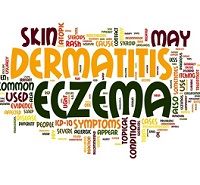Article
Whether or Not to "Soak and Smear" for Atopic Dermatitis
Author(s):
Whether applied to skin that is presoaked or dry, there is no difference in the effectiveness of topical corticosteroids in treating atopic dermatitis, according to a new controlled comparison study in children.

Whether applied to skin that is presoaked or dry, there is no difference in the effectiveness of topical corticosteroids in treating atopic dermatitis, according to a new controlled comparison study in children.
Principle investigator Richard Antaya, M.D., Department of Dermatology, Yale University School of Medicine, New Haven, CT and colleagues report finding no advantage of the "soak and smear (SS)" technique, in a study published in the August issue of the Journal of the American Academy of Dermatology.
The finding was unexpected, the investigators acknowledge, given previous reports of an enhanced effect of steroid ointment when applied via SS. They suggest, however, that those reports may have reflected benefit in specific populations, such as older adults with xerosis or patients with more severe disease.
Previous findings of benefit with SS don't offer evidence to counter this new study, Antaya and colleagues say: "Because none of these studies had a control arm, they do not show that SS is superior to standard treatment."
This investigator-blinded study randomized 45 patients, mean age of approximately 3 years old, to receive treatment ointment by either SS technique or to dry skin. Triamcinolone ointment 0.1 percent was applied twice daily to those 2 years of age or older. Hydrocortisone 2.5 ointment was used in facial and intertriginous areas in all children, and for all affected areas in children younger than 2 years of age.
EASI
Both treatment groups demonstrated high response, with over 80 percent clearance of affected areas on the Eczema Area and Severity Index () measure on day 14. There was also no difference found between the groups in secondary measures of pruritus, sleep quality, or overall burden of the illness.
The investigators note that this study was limited to a relatively small number of participants, falling below their goal of 55. Although they suggest that the larger number may have revealed a subset group that benefitted from SS, their statistical analysis indicated that a cohort of 55 would likely not have evidenced a difference between groups.
Antaya and colleagues conclude that they "did not find that application of topical corticosteroid via SS works better than applications to dry skin for the treatment of atopic dermatitis in children."





